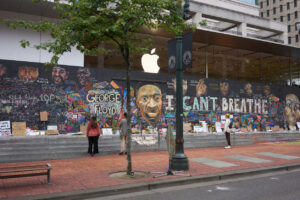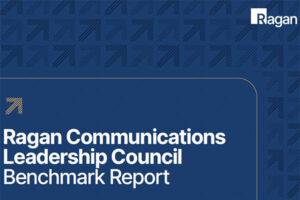How to keep the momentum going with Black History month content
Content campaigns done right can have lasting effects.

February marks the beginning of Black History Month (BHM), and comms departments across the country will tell stories both internally and externally over the next few weeks that spotlight Black excellence. This content reflects how organizations align with the lived experiences of their Black employees, audiences and stakeholders— but smart communicators know that this work shouldn’t stop when the calendar flips over to March.
We spoke with content experts to learn about what makes a Black History Month campaign effective and lasting.
Leaning on core values and the proper lens
For comms pros, impactful messaging always is always rooted in your organization’s core values. According to Pooja Samuel, people operations manager at EasyLlama, the key is viewing your people-centric comms through a lens that ensures the organization’s core values are consistently reflected in all content drips.
“Applying a lens of DE&I is sort of normal and natural as someone from a historically excluded community,” Samuel said. “Applying that DE&I purview to your work is the way to keep the conversation rolling year-round, rather than in just celebration months.”
At EasyLlama, the planning for a BHM campaign begins well in advance of the start of February, allowing Samuel and her team time to strategize about the most impactful channels and messages to disseminate. This allows her and her team to have discussions about their BHM strategy and how it ties to wider content efforts.
This year, Samuel and her team’s BHM timeline is broken up by week, with each week taking on a different topic, including Black business in the United States, Black influence on the arts, and more. The timeline then goes into more detail on specific posts, which channels they’ll be shared on, and when applicable, how employees can interact with them.
“I wanted to make this content timeline because it’s a larger lift than just sending a few Slack messages saying it’s Black History Month,” she said.
BHM content is also an opportunity to share the everyday experiences of colleagues according to Jordan Jennings, senior director of communications and marketing at CHC: Creating Healthier Communities.
‘Communicators can continue to uplift diversity, equity, inclusion, and belonging efforts far beyond Black History Month–or any awareness month for that matter,” she said.
Every day is a chance to share the lived experiences of key stakeholders — not just February. A BHM campaign can also go beyond just content and transition into actions that the comms team can feature. Jennings’ organization is running a “Doula Diaries” campaign to support its Black Birthing Initiative, and to share the important work doulas do in their communities.
“We support our Black Birthing Initiative community partners and the women they serve all year long, beyond Black History Month, raising awareness of the work and stories through videos, emails, reports, social media, brown bag lunches for employees and more,” she said.
“When a family in the program had a home fire emergency in December, our staff contributed to basic needs and one of our staff purchased the items and delivered to the family.”
A wider perspective and pushing toward action
BHM content might only come around once a year, but it shouldn’t be viewed in a vacuum. Instead, content teams should seek out Black voices within their organizations and work to amplify the stories that matter to them.
“Black History Month is about lifting under-resourced or under-heard communities,” said Shalom Obisie-Orlu, communications and marketing coordinator at Creating Healthier Communities. “Consider having more Black voices weigh in on your content and look for ways all year long to include diverse voices in your content strategies.”
Additionally, communicators can seek to go beyond content drips and keep the conversation going by communicating policies through a DE&I lens.
“Say you’re instituting a new pay scale,” Samuel said. “We need to tie in inclusivity, equity and transparency so everybody knows they’re being paid for the same level of work. It doesn’t matter if you’re a person of color or what your sexual orientation is, you’re going to get promoted off this process because it’s most equitable. This approach communicates inclusion and encourages a diverse team to grow.”
It’s also important for comms pros to realize that the messages and themes of Black History Month don’t need to end on March 1 —- these lessons can be carried throughout the year. They also serve as conduits to concrete action.
“Positive stories about Black History Month or any awareness or observance should be transformed into tangible action whenever possible,” Jennings said. “At CHC, we’re not just recognizing doula heroes during Black History Month, we’re supporting our Black Birthing Initiative community partners and those they serve by offering continuous, practical support.”
At CHC, that support comes in the form of providing doulas with full-time salaries.
For Jennings and CHC, it’s about not just talking the talk but walking the walk as well.
“None of us want our organization to simply promote during observance months but not evaluate our internal practices,” she added. “We should be intentional internally before going external.”
Sean Devlin is an editor at Ragan Communications. In his spare time he enjoys Philly sports, a good pint and ’90s trivia night.







